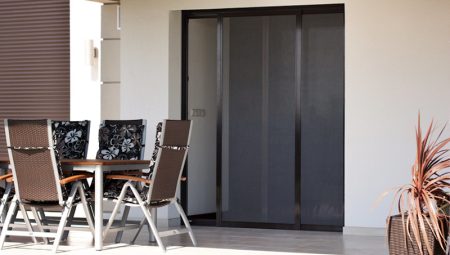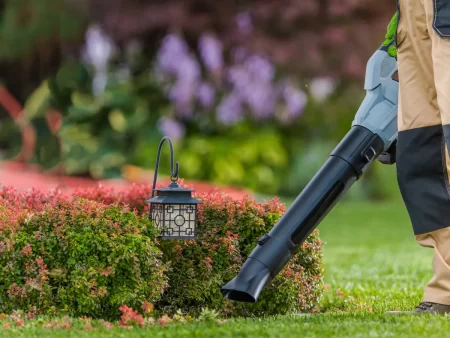Getting a metal fence can protect your property from different elements and make it more attractive. However, you must follow the proper steps, from selecting the right fence to its installation. To install a metal fence properly, clear the area and ensure no hidden pipes or wires are there.
After that, mark the installation area and gather the right tools. It is also necessary to check local rules about installing fences. Next, dig holes for the posts and set them with concrete for stability. Then, attach the fence panels to the posts and install the gate to complete the process. This DIY process could be difficult for anyone. Therefore, you can contact a fence installation contractor for precise results.
Step-by-Step Guide to Installing a Metal Fence
Installing a metal fence may seem difficult, but it can be simple if you use the right method. Following are the steps to set up a fence that matches your style and needs:
Step 1: Choose the Right Fence
First, pick a fence that suits your budget and property’s structure. Popular options for metal fences include:
- Wrought Iron Fence: Made from an alloy that offers long-lasting durability
- Cast Iron Fence: Cast iron is strong, less expensive, and can last years.
- Steel Fence: It is rust-resistant and affordable but may scratch.
- Chain-Link Fence: This type of fence is strong and budget-friendly but lacks privacy.
- Aluminum Fence: This fence costs less and requires low maintenance and cleaning.
By knowing the nature of such metal fences, you can decide based on how much privacy and durability you need.
Step 2: Prepare Your Yard
Now, you should clear the area where you want to install the fence. Remove anything that might block the fence, such as:
- Debris or uneven ground
- Stones, roots, or rocks
- Drains or underground pipes
Before digging, call a utility service to ensure no wires or pipes are below the ground. This step is important for safety and prevents damage.
Step 3: Find Property Lines
It is also important to know where your property begins and ends. You can find property lines by:
- Checking your property deed for maps.
- Hiring a surveyor to mark the boundaries.
Step 4: Follow Local Rules
Different areas have rules for fence height, type, and placement. To stay within the law:
- Contact your local authorities or Homeowner’s Association (HOA).
- Get a permit if required.
- Informing your neighbors about your fence plans.
Following the rules from the start avoids fines and delays.
Step 5: Measure Your Space
Measure the area where you plan to install the fence. You can use tools like a measuring tape or measuring wheel for accurate measurements. This step helps you:
- Buy the right amount of materials.
- Save time and money.
To avoid mistakes, write down the total length and special measurements for gates or corners.
Step 6: Gather Materials and Tools
Prepare all the items needed for the fence. Common materials include:
- Fence panels
- Posts (corner, line, and end posts)
- Brackets for attaching panels
- Concrete or gravel for stability
- A gate, if needed
Essential tools that you will need are:
- A shovel
- Measuring tape
- Stakes
- String
- Spray paint
- A Post-hole digger
Step 7: Plan the Fence Layout and Dig the Posts Holes
After that, it’s time to place the fence panels on the ground. Use stakes and string to mark the fence line. Mark spots for the posts with spray paint. This step helps in placing the posts correctly. Then, use a post-hole digger to dig holes at the spots you marked. Each hole should:
- Be wider and deeper at the bottom for stability.
- Have a layer of gravel at the bottom for drainage.
- Hold the fence steady.
Step 8: Install the Posts, Panels, and Gate
Start by placing the posts in the holes. You can secure them by:
- Adding concrete around the posts for stronger support.
- Allowing the concrete to set completely before attaching panels.
Follow the manufacturer’s instructions to attach panels to the posts. If your fence includes a gate, install it last. You may need help lifting and installing heavier gates properly.
What Are the Benefits of Installing Metal Fences?
The following are the key benefits of a metal fence:
- Provides Excellent Security: Metal fence keeps intruders away and protects your children and pets.
- Enhances Property Aesthetics: It offers various styles and designs to suit different requirements.
- Requires Low Maintenance: This fence needs less care than wood or bamboo fences.
- Offers Durability: It is resistant to harsh weather conditions and wears well.
- Increases Property Value: Enhances the home’s appearance and attracts potential buyers.
- Lasts a Long Time: The fence’s coatings protect it from rust and damage, helping it stay strong for years.
- Cost-effective: Low maintenance and a long lifespan help save money over time.
Read More: How Licensed Access Control Fencing Can Secure Your Property
Conclusion
In conclusion, installing a metal fence is easy if you follow the right steps. You can start by picking the right metal fence, getting your yard ready, and following the rules in your area. Then, measure your property, add marks, and gather materials or tools for proper installation.
After that, plan the fence layout and dig post holes to hold the fencing posts. Lastly, install the posts and panels along with the gate if needed. If you are unsure about applying these steps, get professional services from a fence installation company.










